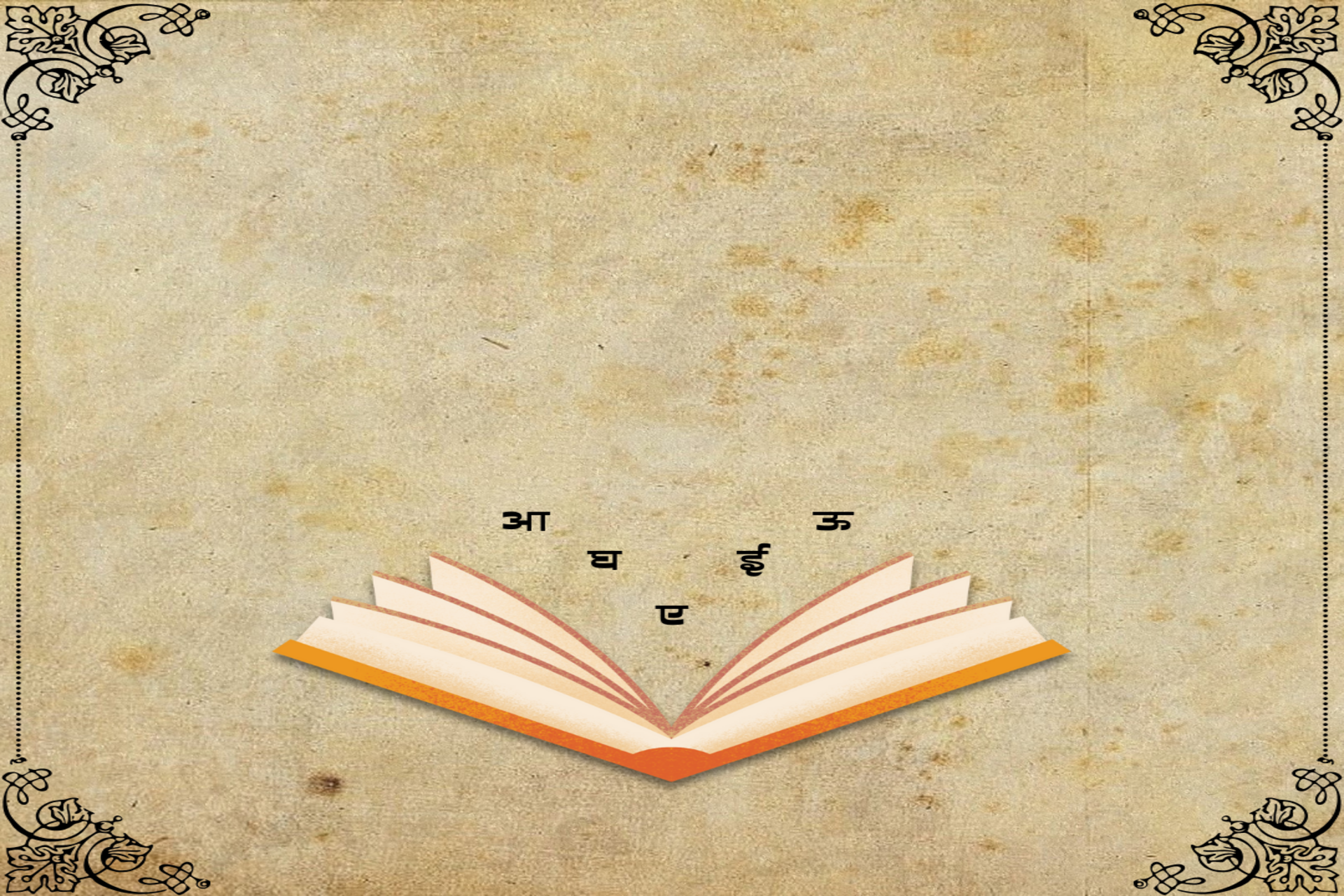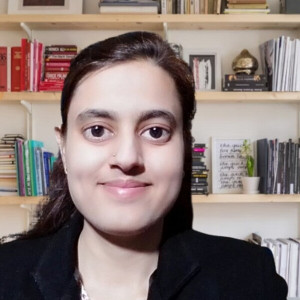Whether you're just beginning your journey with Hindi or looking to strengthen your foundation, understanding the core concepts found in any well-structured Hindi Grammar Book is essential. These books are more than just reference materials — they offer a roadmap to the rules, patterns, and structures that shape the language. In this article, we’ll break down the fundamental elements of Hindi grammar in a way that’s easy to grasp and practically applicable. You'll discover how these principles are used in real-life contexts and why they matter more than you might think. Ready to learn and simplify the complexities? Let’s dive in.

The Ins and Outs Of The Hindi Grammar
For learners curious about India's rich linguistic heritage, Hindi offers a fascinating window into both culture and communication. As the official language of India and spoken by over 500 million people, Hindi carries centuries of history, tracing its origins to ancient Sanskrit and evolving through the Indo-Aryan family. Over time, it developed alongside Urdu, forming from the same Hindustani base but branching off due to script and vocabulary influences.
While Urdu adopted the Persian script and borrowed heavily from Arabic and Persian, Hindi used the Devanagari script and remained rooted in Sanskrit traditions. This evolution is captured in countless texts, from scripture to modern literature, and even in the pages of an old grammar book. Today, Hindi's structure—especially its logical treatment of the verb—makes it surprisingly approachable for new learners. Ready to explore how it all fits together? Let’s dive into the essentials that shape this timeless and expressive tongue.

Breaking Down Key Hindi Grammar Rules
To build a strong foundation in Hindi, it's important to understand how the basic grammar elements work together. From recognising how a noun changes based on gender to identifying when to use the right pronouns, every detail matters. Hindi also relies heavily on verbs that shift with tense, person, and even respect levels — something that sets it apart from English. You'll also notice that forming singular and plural words follows its own set of patterns, often tied closely to word endings and gender. In the following sections, we’ll break down these essential rules to help you grasp the structure and rhythm of the language more confidently.

Mastering Sentence Patterns While Learning Hindi Grammar
When you're just starting to learn Hindi, especially if your first language is English, it's natural to feel a little confused. But here's the good news: Hindi sentence structure follows a simple and consistent pattern—subject + object + verb. This means that once you learn the basic word order, you can start forming all kinds of sentences, even in different tenses like present or past. Let’s break this down with some very easy examples that you can try right away.
For example:
Main aam khaata hoon. (I eat mango.)
Main school jaata hoon. (I go to school.)
Main TV dekhta hoon. (I watch TV.)
Notice something? The pattern stays the same—Main (I) is the subject, aam/school/TV is the object, and khaata hoon/jaata hoon/dekhta hoon is the verb. Easy, right?
Now let’s try the past tense with the same kind of sentences:
Maine aam khaaya. (I ate a mango.)
Main school gaya. (I went to school.)
Maine TV dekha. (I watched TV.)
By learning how to build sentences in Hindi, you'll quickly notice how logical and rhythmic the language feels. Unlike English, Hindi doesn't flip word order for questions or answers. Once you understand the structure, you can express anything—just plug in the right words!
So, whether you're speaking in the present or talking about something from the past, the system stays steady. That’s one of the reasons many learners say Hindi becomes easier once you get started.
Subject: Main (I)
Object: Aam (mango), School, TV
Verb: Khaata hoon / Jaata hoon / Dekhta hoon
Try colour-coding your own Hindi sentences to see the pattern more clearly!
Want to try more and boost your confidence? Start with our guide on Building Sentences in Hindi—it’s designed to help learners like you to learn step by step.
Hindi Verbs Made Simple
When you begin to learn Hindi, understanding verbs is essential. Verbs express the action or state in a sentence, and one of the most important verbs you’ll encounter is honaa (होना) (ho-naa) meaning “to be”. In its infinitive form, like most Hindi verbs, it ends with -naa, which makes it easy to recognise.
To use a verb correctly, you must consider singular and plural subjects, gender variations, and tense. For instance, Main tha (मैं था) (main tha) changes to Main thi (मैं थी) (main thee) when the speaker is feminine. Similarly, Ham hain (हम हैं) (hum hain) shows how the verb changes for plural forms.
Understanding where the main verb fits in relation to the subject and direct object will make your sentences natural and accurate. If you want to expand beyond this, check out The Most Useful Verbs in Hindi for other commonly used action words you’ll need in daily conversations.
Use the Hindi Grammar Worksheets section below for interactive exercises. They focus on verb conjugation, gender variations, and singular/plural forms to help you build confidence step by step.
| Pronoun | Number | Gender | Present Tense | Meaning | Past Tense | Meaning | Future Tense | Meaning |
|---|---|---|---|---|---|---|---|---|
| Main (मैं) (main) | Singular | Masculine | hoon (हूँ) (hoon) | I am | tha (था) (tha) | I was | hunga (हूँगा) (hoon-ga) | I will be |
| Main (मैं) (main) | Singular | Feminine | hoon (हूँ) (hoon) | I am | thi (थी) (thee) | I was | hungi (हूँगी) (hoon-gee) | I will be |
| Tum (तुम) (tum) | Singular | Masculine | ho (हो) (ho) | You are | tha (था) (tha) | You were | hoge (होेगे) (ho-ge) | You will be |
| Tum (तुम) (tum) | Singular | Feminine | ho (हो) (ho) | You are | thi (थी) (thee) | You were | hungi (हूँगी) (hoon-gee) | You will be |
| Aap (आप) (aap) | Singular/Plural | Both | hain (हैं) (hain) | You are | the (थे) (the) | You were | honge (होंगे) (hon-ge) | You will be |
| Voh/Yeh (वह/यह) (voh/yeh) | Singular | Masculine | hai (है) (hai) | He is | tha (था) (tha) | He was | hoga (होगा) (ho-ga) | He will be |
| Voh/Yeh (वह/यह) (voh/yeh) | Singular | Feminine | hai (है) (hai) | She is | thi (थी) (thee) | She was | hogi (होगी) (ho-gee) | She will be |
| Ham (हम) (hum) | Plural | Both | hain (हैं) (hain) | We are | the (थे) (the) | We were | honge (होंगे) (hon-ge) | We will be |
| Ve/Ye (वे/ये) (ve/ye) | Plural | Both | hain (हैं) (hain) | They are | the (थे) (the) | They were | honge (होंगे) (hon-ge) | They will be |
This table helps you quickly compare how the verb honaa changes with pronouns, gender, number, and tenses. Practice by saying each form aloud with its pronunciation. Repetition will make these patterns stick naturally, so you can apply them without thinking.
Mini Worksheet: Practice Hindi Verbs
Fill in the blanks with the correct form of honaa (to be) based on the subject and tense:
- Main _______ (present tense)
- Tum _______ (future tense)
- Voh (feminine) _______ (past tense)
- Ham________ (present tense)
- Aap _______ (future tense)
ANSWERS
- hoon
- hoge
- thi
- hain
- honge


Hindi tenses
In any language, tenses are used to talk about time – when an action takes place: in the past, in the present, or in the future. Hindi is no different! Learning tenses in Hindi is very important because they help us understand when something is happening and whether the action is still going on, already finished, or will happen later. If you use the wrong tense, the meaning of the sentence can change completely, which may confuse the listener.
In Hindi, verbs change their form based on the tense. This means that a single verb can look different in the past, present, and future. Along with this, we often use small helping words called helping verbs, such as हूँ (hoon), था (thaa), or होगा (hoga). These words make the meaning clear. For example, if you say मैं जाता हूँ (main jaata hoon), it means “I go” in the present, but if you say मैं गया था (main gaya thaa), it means “I went” in the past. Similarly, मैं जाऊँगा (main jaaunga) means “I will go” in the future.
At first, this might feel new and a little confusing, but the good news is that Hindi tenses follow certain patterns. Let’s lock in the core patterns with quick examples:
Once you learn these common patterns, it becomes much easier to recognise and use the correct tense in sentences. If you want to explore this topic in detail and understand every tense with examples, then check out A Complete Guide To Hindi Tenses, which explains everything step by step in a very simple way.
Present: Look for है/हैं
Past: Mostly ends with आ, ए, ई
Future: Ends with गा, गी, गे
Hindi Nouns And Genders
Understanding Hindi Nouns and Genders is essential for anyone learning the language because gender impacts how sentences are formed. Unlike English, where nouns are gender-neutral, in Hindi, every noun has a gender – masculine (pulling, pronounced as pul-ling) or feminine (striling, pronounced as stree-ling). This concept might seem unfamiliar to English speakers, but it is one of the first things you need to master. For example, the word ladka (लड़का, pronounced as lud-ka) means “boy” and is masculine, while ladki (लड़की, pronounced as lud-kee) means “girl” and is feminine. Notice how a small change in the ending from -a to -i changes the gender completely.

Most masculine nouns in Hindi end with -aa (like ladka), while feminine nouns often end with -i or -ee (like ladki). However, there are exceptions, such as kitab (किताब, kee-taab), which means “book” and is feminine, even though it doesn’t end with -i. This makes it important to memorise common gender rules and exceptions. Gender affects not just the nouns, but also the adjectives and verbs in a sentence. For instance, “The boy is tall” translates to ladka lamba hai (लड़का लंबा है, lud-ka lum-baa hai), while “The girl is tall” becomes ladki lambi hai (लड़की लंबी है, lud-kee lum-bee hai). See how lamba changes to lambi to agree with the gender of the noun.
Basically, in Hindi, any given word (or close) has a gender, masculine or feminine. This will affect how the words end. So it is essential to know which gender to use for every word if you want to get the grammar and the pronunciation right.
For example :
- A girl = larkee / Mother = maataa
- A boy = larkaa / Father = Pitaa
- A husband = pati
- A wife = patnee
One thing that will probably annoy some Hindi beginners is that genders do not seem to follow any rule when it comes to words used to describe objects, emotions or places. there is no real logic when it comes to noun genders, and the only thing you can do is put your learning hat on and try to memorise as many Hindi words as you can.
| English | French | Spanish | Hindi |
|---|---|---|---|
| Orange | Orange (F) | Naranja (F) | नारंगी - Nāraṃgī (M) |
| House | Maison (F) | Casa (F) | घर - Ghar (M) |
| Pigeon | Pigeon (M) | Paloma (F) | कबूतरअ - Kabūtrā (M) |
| Book | Livre (M) | Livro (M) | किताब - Kitāb (F) |
| Flower | Fleur (F) | Flor (F) | फूल - Phūl (M) |
| Lightning | Eclair (M) | Relámpago (M) | बिजली - Bijlī (F) |
Mastering these basics will make your Hindi speaking sound natural and accurate. If you want to dive deeper into grammar and verb usage, you can Find Hindi Lessons To Master Conjugation and strengthen your skills. Learning gender rules is the foundation for correct sentence construction, so start practicing today and make Hindi fun and easy!
Adjectives in Hindi: Inflective or not?
To add a level of complexity to the Hindi language vs the English language, many of the Hindi adjectives are what linguist called "inflecting adjective". Nothing too complicated to understand as it just means that, unlike English, in Hindi, most attributes need to match the word they describe.
The masculine singular form which is the same as the adjective itself and always with -aa or -a.
The masculine plural form which looses the -aa ending and replaces it with -e.
The feminine singular AND plural form which looses the -aa ending and replaces it with -e.
Remember that the neutral form of the inflective adjectives always ends with -aa, making it easy to spot. All you need to do then is to remember which gender the noun you're writing is and apply the right ending.
Let us look at a few examples with the adjective small (chota), big (bada), and yellow (peela).
A small orange (Masculine singular) = Ek chhota naarangee
Big houses (Masculine plural) =Bade ghar
A big lightning (Feminine singular) = Ek badee bijalee
Small books (Feminine plural) = Chhotee kitaaben
A yellow flower (Masculine singular) = Ek peela phool
Yellow flowers (Masculine plural) = Peele phool

Hindi also has non-inflecting adjectives that will make your life easier as they always stay the same no matter what gender the word they describe is or if it is a singular or plural form.
Unfortunately, this type of adjective is less common. These adjective do not have a specific ending so it makes it harder to spot them and it will be a case of learning them rather than trying to spot them.
A few of these non-inflecting adjectives include:
Kam =short as in "Vah kam hai" meaning "He is short".
Sankeern = narrow as in "Yah sadak bahut sankeern hai" meaning "This street is too narrow."
Namakeen = salty as in "Yah ek namakeen lassee hai" meaning "This is a salted lassi"
Saaf = clean as in "Usaka kamara saaf hai" meaning "His room is clean"
Videshi = foreign as "Ek videshee bhaasha" meaning "A foreign language"
Must-Know Daily Hindi Sentences for English Speakers (With Pronunciation)
When you start learning Hindi as a different language speaker, one of the most useful things is to focus on daily used sentences—phrases you’ll use in real conversations almost every day. These common expressions not only help you sound natural but also give you confidence when speaking to native speakers. Think of it as a smart purchase that will always pay off, like getting a well-reviewed paperback on Amazon that has a 5-star rating and comes from a verified seller—you know it’s worth your time and effort. By practising these sentences regularly, you’ll feel like you’ve mastered the hardest part of communication, leaving the fear of being left speechless far behind.
Here are some examples of daily used Hindi sentences along with their pronunciation and English meaning:
Namaste! Aap kaise hain? (नमस्ते! आप कैसे हैं?) – Hello! How are you?
(Pronunciation: Nah-mah-stay! Aap kai-say hain?)
Mera naam John hai. (मेरा नाम जॉन है।) – My name is John.
(Pronunciation: May-raa naam John hai.)
Aap kahan se hain? (आप कहाँ से हैं?) – Where are you from?
(Pronunciation: Aap kahaan say hain?)
Mujhe paani chahiye. (मुझे पानी चाहिए।) – I need water.
(Pronunciation: Moo-jhay paa-nee chaa-hi-ye.)
Kitne baje hain? (कितने बजे हैं?) – What time is it?
(Pronunciation: Kit-nay bajay hain?)
Kripya madad kijiye. (कृपया मदद कीजिए।) – Please help me.
(Pronunciation: Krip-ya ma-dad kee-ji-ye.)
These sentences form the backbone of everyday conversations. If you purchase a good Hindi learning paperback, you’ll find that many such practical examples are included, making it easy to learn.
Practicing these phrases every day will make you comfortable in real-life situations—whether you’re traveling to India, watching Bollywood movies without subtitles, or chatting with Hindi-speaking friends. Remember, language learning is about consistency, and these everyday Hindi sentences are your first step toward fluency. So, start using them right away and see how quickly you progress!
How To Find Lessons To Master Hindi Conjugation
If you’ve made it this far—through Hindi nouns, genders, sentence patterns, everyday examples, and pronunciation guides—you’re already well ahead of most beginners, and that momentum is gold. However, finding the right tutor near you and whose method fits your needs and goals isn't an easy task.
That’s where Superprof shines. The platform brings together a large network of verified Hindi tutors across the UK, India, and far beyond—so whether you’re in London, Singapore, Lucknow, or logging in from halfway around the world, you can match with a teacher whose style fits your pace and goals. Many tutors offer trial or introductory sessions, making it low‑risk to find the perfect fit. Once you’re matched, structured lessons reinforce everything you’ve read: noun gender patterns, adjective agreement (lamba → lambi), verb endings that shift with subject gender and number, and those high‑frequency survival phrases that move you from “I get the rules” to “I can actually use them.”
Of course, practice doesn’t stop when class ends. Keep your ear tuned by streaming Hindi and Bollywood content—yes, go ahead and binge that new series on Netflix, Prime, or wherever you watch—then jot down new words, pause for subtitles, and try saying lines aloud. Recycle the grammar from your lessons: change masculine nouns to feminine, flip present to past, or describe what characters will do next using the future tense you learned earlier. Small daily reps build fluency faster than marathon cram sessions.
So don’t let your progress stall at the reading stage. Book a session with a qualified Hindi tutor on Superprof and turn your growing knowledge of Hindi grammar into real‑world conversation. Your next confident “main Hindi bol sakta/sakti hoon” (मैं हिंदी बोल सकता/सकती हूँ — I can speak Hindi) is closer than you think—click, connect, and start speaking today!














